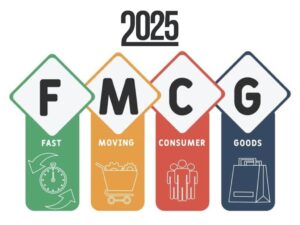
The second quarter of the financial year 2024-2025 has brought mixed results for India’s Fast-Moving Consumer Goods (FMCG) sector.

The second quarter of the financial year 2024-2025 has brought mixed results for India’s Fast-Moving Consumer Goods (FMCG) sector.
While some companies have managed to post revenue growth and profit increases, others have faced significant challenges.
Ankur Bisen, Senior Partner & Head – Consumer, Food & Retail at Technopak Advisors weighs on FMCG firms’ prospects amid a subdued demand environment.
Companies with Positive Q2 Results
Marico has reported a strong performance, with a 20% rise in net profit to ₹433 crore. The company’s revenue grew to ₹2,746 crore, driven by robust rural demand and the success of its Parachute Coconut Oil and international business. Marico’s strategic price adjustments and brand investments have helped it navigate competitive pressures and rising input costs.
Godrej Consumer Products Limited (GCPL) also showed resilience, with a 7% growth in both volume and value. Despite economic pressures, GCPL managed to maintain steady growth across its markets, supported by strong performance in categories like Air Care, Laundry, and Sexual Wellness. Companies Facing Challenges On the other hand,
Hindustan Unilever (HUL) faced a 4% drop in net profit due to higher expenses and a slowdown in urban markets. HUL’s total revenue from operations rose by only 1.5%, reflecting the challenges of moderating urban demand and rising input costs. Nestle India also reported a marginal decline in net profit, impacted by high commodity prices and subdued consumer demand. The company’s revenue growth was disappointing, with only a 1% year-on-year increase.
Ankur Bisen provides valuable insights into these mixed results: “Volume-led is more important because I think in rural market, price sensitivity is there, and with the persisting challenges of real wages and unemployment and other such factors, it will be a tall order to expect price rise or price-led growth from especially the rural and semi-urban market.”
He adds, “I will also be looking at the premiumisation and the value addition that most majors have not talked about for margin enhancement and to what extent that has played out.”
Future Outlook
Despite the challenges, some companies remain optimistic about the festive season boosting demand. The gradual recovery in rural demand, coupled with strategic investments in premiumisation and value addition, could help FMCG firms navigate the current economic landscape.
Conclusion
The mixed Q2 results for FMCG firms highlight the varying impacts of economic pressures, consumer demand trends, and strategic responses. Companies that can effectively leverage rural demand, manage input costs, and invest in premiumisation are likely to perform better in the coming quarters.
Read the full article at: https://www.deccanherald.com/business/analysts-expect-volume-led-growth-for-fmcg-firms-in-q2-3230656





